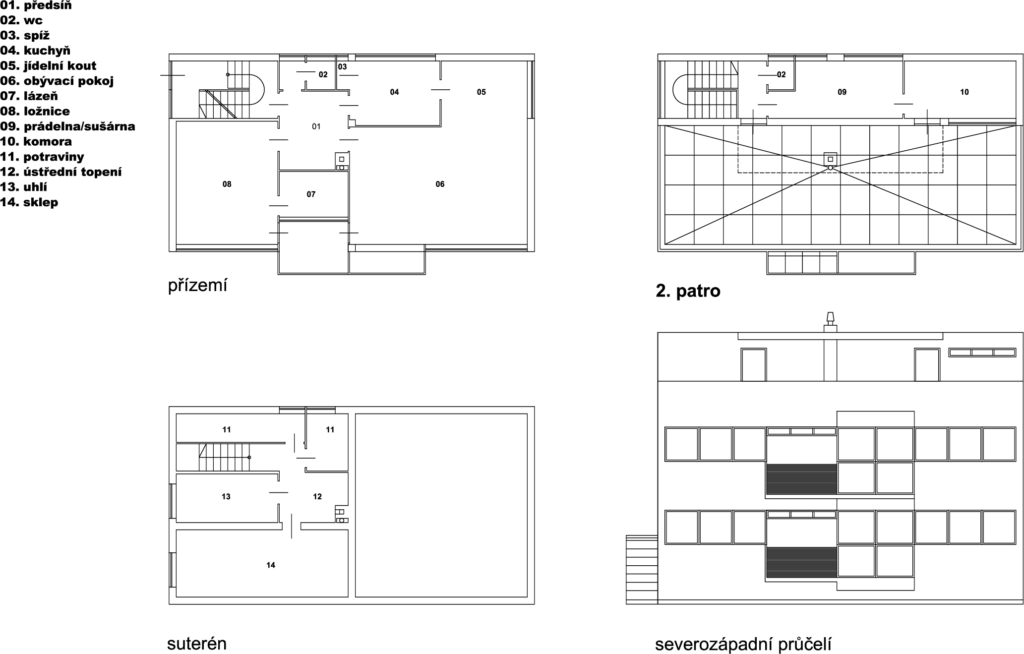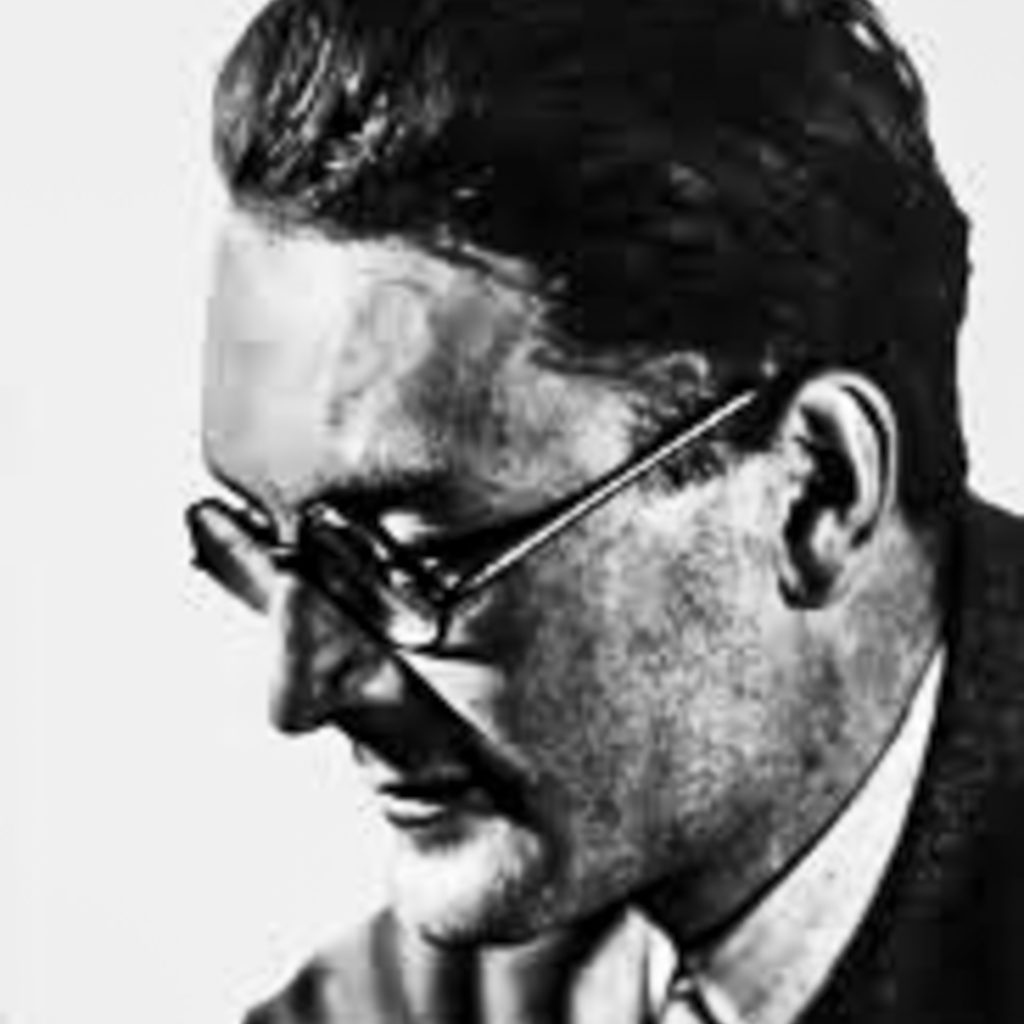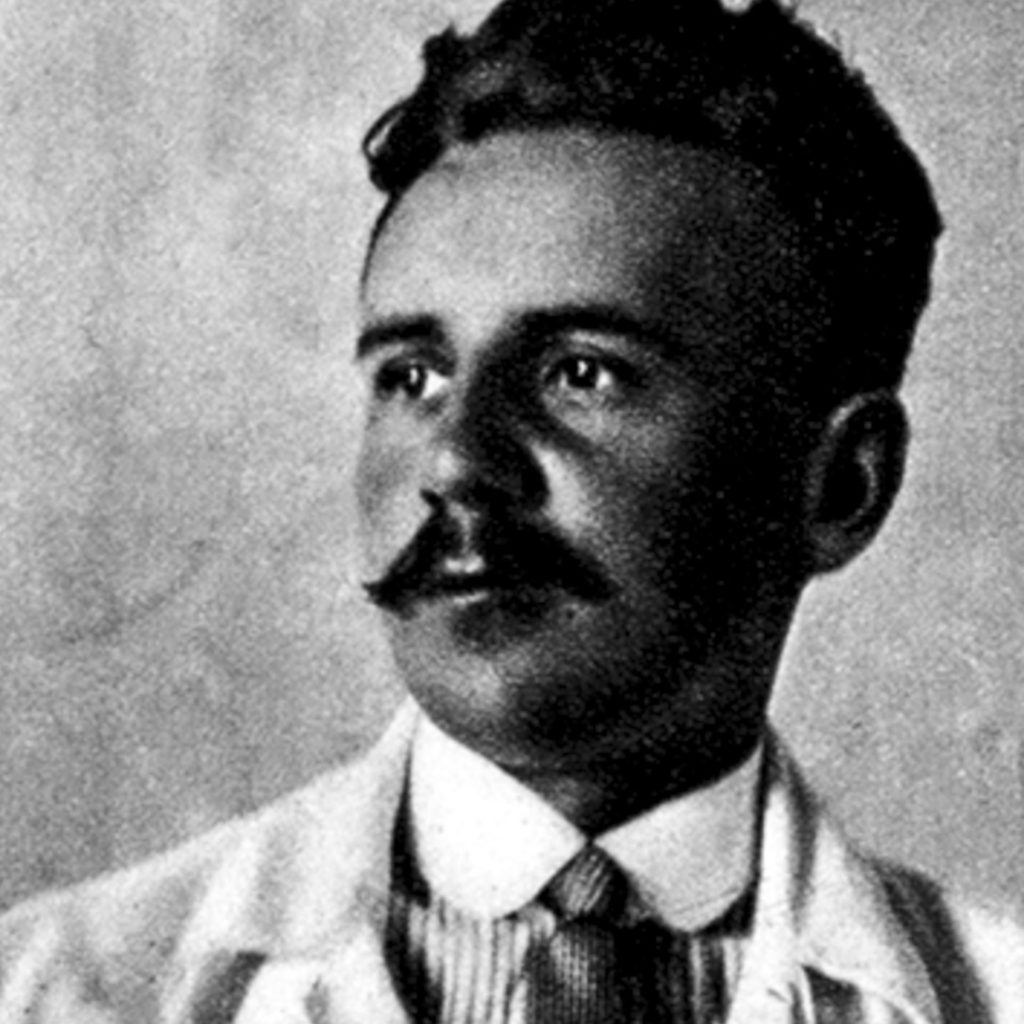
The House of Emanuel and Marie Lisý
Like the neighbouring Vaváček Villa by Oldřich Starý, Antonín Heythum and Evžen Linhart repeated the layout of both floors in the case of Emanuel Lisý’s two-family house, which is topped by a large sundeck. The Lisý House stood out in the series of two-apartment houses thanks to the connection of the living room with the balcony, sunroom, and bedroom. Both architects were inspired by the white villas of Le Corbusier.

Architect
Evžen Linhart
(*1898 Kouřim +1949 Prague)

An architect, furniture designer, and student of Antonín Engel at CTU in Prague. His works are based on purism (co-founder of the “Purist Four” of the Devětsil Association) and Czech modernism, which stood in juxtaposition to the hitherto popular decorativism. Influenced by Le Corbusier, he later became an advocate of functionalism. He was a member of the ARDEV Association and Mánes Union of Fine Arts. His designs, most of which were unfortunately not implemented, combine an extraordinarily artistic dispositional creativity with structural purity and attention to detail. Together with Antonín Heythum, he designed the Lisý House in the Baba estate.
1918-1924
studied architecture with Professors Rudolf Kříženecký and Antonín Engel at CTU in Prague
1924-1945
employed at the Housing Authority at the Prague City Hall
1946-1949
Director of the Department of Exhibitions at the Ministry of Information
Significant Works
1924-25
residential block of flats, Prague-Žižkov
1925
residential block of flats, Prague-Hostivař
1927-1929
his own villa, Prague-Dejvice
1932
house of Marie and Emanuel Lisý (in cooperation with Antonín Heythum), Baba, Praha-Dejvice
1938
residential house, Prague-Dejvice
1946-58
collective house of the Stalin chemical plants, Horní Litvínov (in cooperation with Václav Hilský) 1947
Czechoslovak exhibition at the Triennale di Milano
Antonín Heythum
(*1901 Most +1954 Rottach, Bavaria)

A stage designer, graphic artist, architect, and furniture designer. He was at the birth of the Liberated Theatre stage design. He worked briefly in Le Corbusier’s studio in Paris and, in 1936, he received a gold medal at the Triennale in Milan for Theatre Stage Setting. In 1938, he left for the USA to set up the Czechoslovak pavilion for the International Exhibition in New York and the San Francisco Exhibition. He then stayed in the USA and lectured at universities. His work was based on cubism but gradually moved towards the simplicity and versatility of functionalism. He was, above all, a pioneer in theatre constructivism. In furniture-making, he was an advocate of standard functionalist design for series production. He is the co-author of Design for Use from 1944. Together with Evžen Linhart, he designed the Lisý House in Baba.
1920-1924
studied architecture, civil engineering, and ship construction at CTU in Prague
1924-1939
architect, designer, and stage designer in Prague
1939
emigrated to the USA
1940-1941
lectured at the New School for Social Research in New York
1941-1946
lectured at the California Institute of Technology
1946-1950
lectured at Syracuse University
Significant Works
1924-1938
stage designs for prominent Czech theatres
1932
house of Marie and Emanuel Lisý (in cooperation with Evžen Linhart), Baba, Praha-Dejvice
1935
Czechoslovak Pavilion at the World Exhibition in Brussels
Owner
Emanuel and Marie Lisý
Mr. and Mrs. Lisý and their daughter moved into the house in 1932; at that time, Emanuel Lisý was working as an editor for Czechoslovak Radio.

